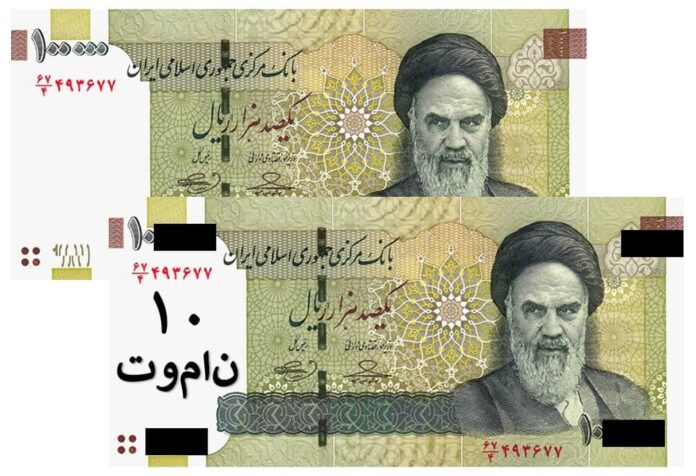The Iranian Parliament has voted to implement a programme to redenominate the country’s currency, the Rial which will result in removing four digits or zero’s off the present banknotes. The project has been in discussion since 2016 and has now had ascent from lawmakers which would also aim to re-introduce the Toman – onetime currency of Iran to replace the beleaguered Rial.
A Short History of the Rial
First introduced in 1932, the Rial which replaced the Toman was Iran’s first decimalised currency and divided into 100 dinar. The Rial had its overall value pegged to the British Pound before the Second World War. From 1945, the Rial was set at 32 Rials per USD which was in effect until 1957. Iran discontinued the official link to the US Dollar in 1975 with the Rial freely exchanging at a rate of 70 to the USD just before the Iranian Revolution.
The redenomination of the Rial and reintroduction of the Toman is essentially the result of rampant inflation which has seen the Iranian currency trade at more than 150,000 to one US Dollar – though officially pegged at 42,000. Since the Iranian revolution 40 years ago, followed by several years of war with Iraq in the early 1980’s and a series of US-led sanctions against the Iranian government over claims Tehran are supporters of international terrorist activities, the Iranian economy has suffered substantially. Iran is also heavily dependent on the sale of crude oil and natural gas and whose value has been significantly lessened due to decreased international demand.
As a result, the Rial’s domestic buying power has been eroded by high levels of inflation, which are among some of the world’s highest rates. Iranians have been dealing with having to carry great amounts of banknotes but have been routinely conducting business in the Toman, though settling accounts using Rial banknotes – coins have just about disappeared from day to day commerce. In practise, one Toman, is equal to 10,000 and which makes a simple market purchase of 500,000 Rials equal to 50 Tomans, making the calculation much more simplified. Banknotes presently in circulation range from 5000 to 100,000 Rials, depending on the rate of exchange in the markets, the largest banknote can have a value of between USD 2.38 and 66 cents.
From Rial to Toman
Officials at Iran’s Central Bank have commented that the process of transitioning the country’s monetary system to the Toman with coins and banknotes could take anywhere from two to five years. Along with the announcement confirming the Central Bank will transition to the Toman currency, Dr. Abdolnasser Hemmati, Governor of the Central Bank announced the plan will also include the minting of one and two Toman circulation coins. Currently, due to the worldwide pandemic which has hit Iran with high rates of COVID-19 sufferers, many Iranians have opted to conduct business with debit cards rather than cash. The transition to the Toman may not slow down the rate of inflation which is currently at around 40% annually. Since the country’s economic forecast is not expected to make any significant improvements, the exercise is essentially welcome by ordinary Iranians as an easier method of carrying out transactions and ease book-keeping tasks.
A Tradition of Over-Prints
In an effort to aid the transition process, it is believed the Central Bank may release existing Rial denominated banknotes with overprints (similar to the replicated illustration shown in this article) until existing stocks are utilised and new banknotes can be printed in Toman denominations. There is precedence for this practise when after the revolution in 1979, banknotes bearing the image of the former Shah were obscured with large ornate patterns printed over his portrait in black ink. These notes were soon replaced in 1980 with provisional banknotes depicting the Imam Reza shrine. The revolutionary series of Rial banknotes was first issued in 1981 and a series of banknotes bearing the image of Ayatollah Ruhollah Khomeini, founder of the Islamic Republic were introduced in 1992.
For additional information on the coins and banknotes of Iran, please visit the website of the Central Bank of the Islamic Republic of Iran.
The author, Michael Alexander, is president of the London Banknote and Monetary Research Centre.
If you’d like to know more about the Iran and its cultural and numismatic treasures, follow Ursula Kampmann on her journey through the country.





